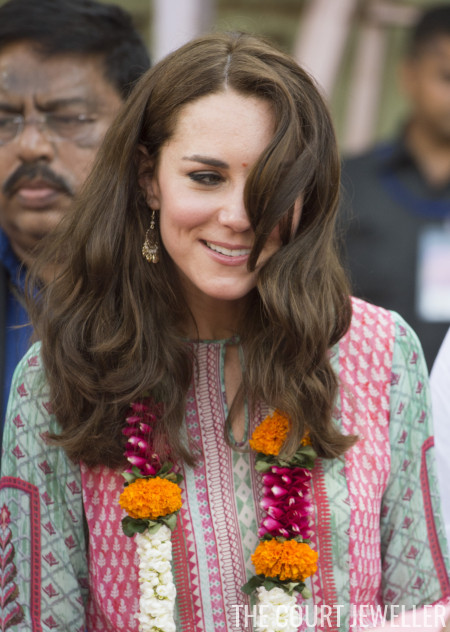 |
| Kate visits Oval Maidan in Mumbai (Photo: Chris Jackson/Getty Images) |
Kate changed into a new outfit and jewelry before the second engagement of the tour: a visit to Oval Maidan in Mumbai to play cricket.
The Duchess of Cambridge’s Accessorize Filigree Bead Short Drop Earrings https://t.co/be0KBZLFSf pic.twitter.com/MmCrkjUlSk— Countess Wessex Blog (@AnnieElizabethN) April 10, 2016
Anna, always quick with a jewelry ID, sleuthed out the identity of the new pair of earrings: they’re the Filigree Bead Short Drop Earrings from Accessorize/Monsoon, a British high street chain that’s similar to Claire’s in America. The earrings reportedly retail for around £8.
 |
| Photo: Chris Jackson/Getty Images |
The earrings moved nicely while Kate played cricket in one of Mumbai’s largest public parks.
 |
| Photo: INDRANIL MUKHERJEE/AFP/Getty Images |
And they definitely glittered in the bright Indian sun!
 |
| Photo: PUNIT PARANJPE/AFP/Getty Images |
Kate wore the same earrings and jewels for a visit later in the afternoon to the historic Banganga Water Tank.
 |
| Photo: Arthur Edwards – Pool/Getty Images |
One more look from the Banganga Water Tank, where William and Kate met with representatives from SMILE. What do you think of Kate’s affordable new earrings?







